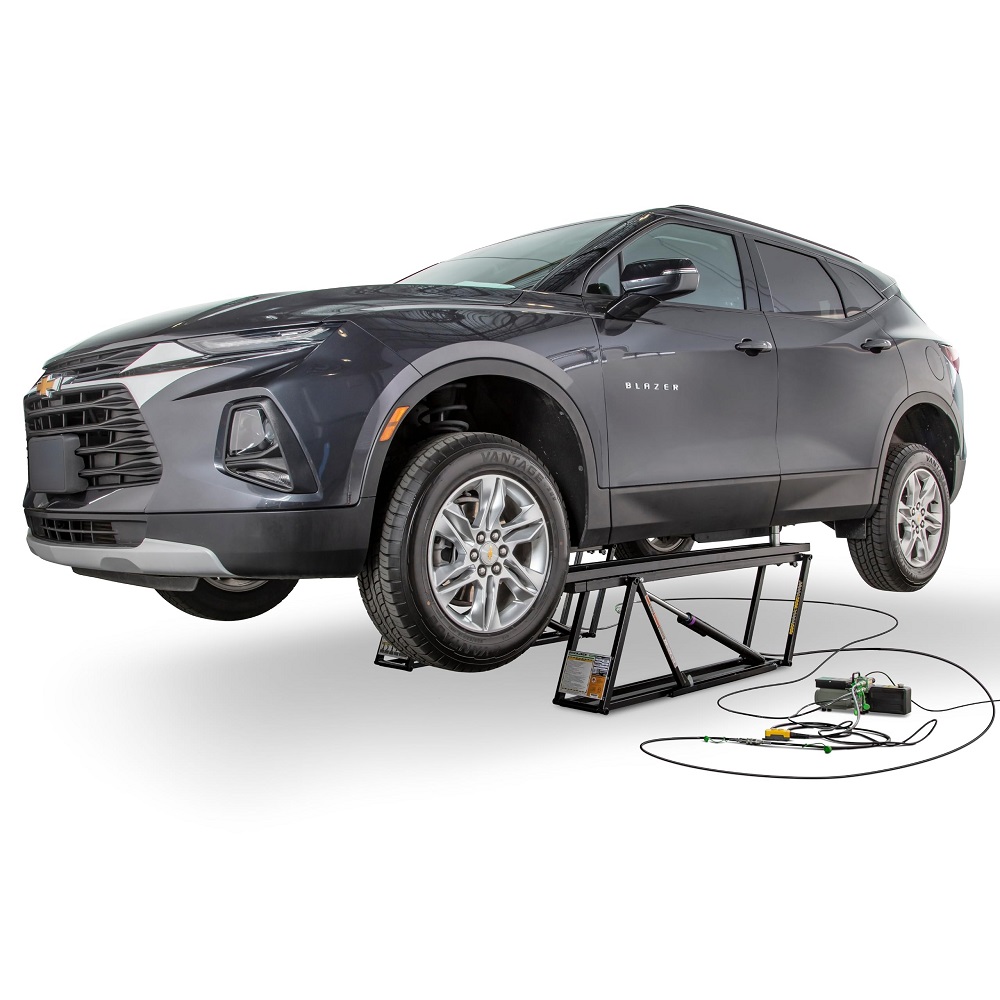Introduction to Portable Car Lifts
The Growing Need for Home Automotive Solutions
In today’s fast-paced world, car ownership has become essential for many individuals. As the number of vehicles increases, so does the demand for effective and efficient home automotive solutions. One such solution is the portable car lift, which allows vehicle owners to perform maintenance, repairs, and inspections right in their garages. Portable car lifts provide a convenient way to access the undercarriage of a vehicle without needing to visit a professional shop. Their growing popularity can be attributed to their versatility, ease of use, and cost-effectiveness.
Benefits of Using a Portable Car Lift
The main benefit of using a portable car lift is the enhanced convenience it provides. Vehicle owners can save time and money by conducting repairs and maintenance at home. Additionally, portable car lifts are designed for ease of operation, making them accessible to hobbyists and professional mechanics alike. Whether you need to change oil, rotate tires, or perform more complex repairs, a portable car lift enables you to work more efficiently. These lifts also improve safety by providing a stable platform for working underneath the vehicle.
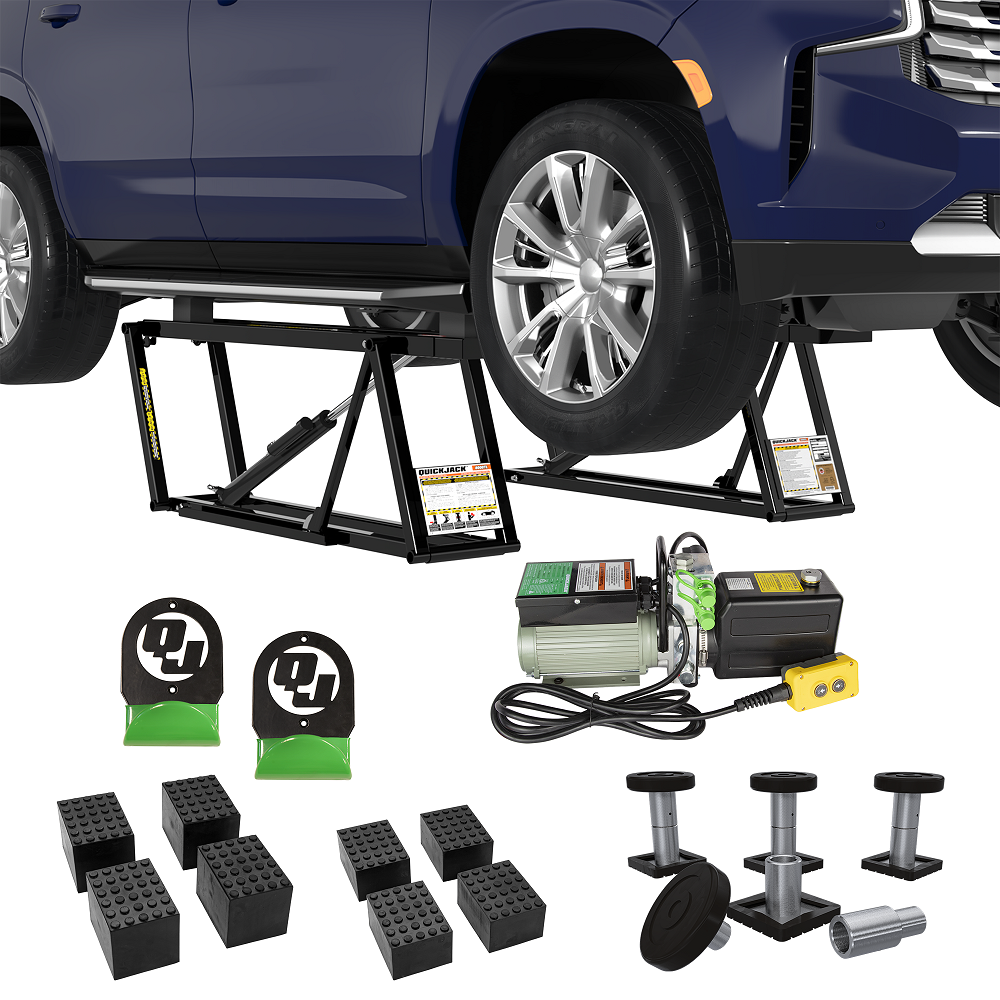
Purpose of This Guide
This guide aims to help readers understand how to choose the right portable car lift for their garages. We will examine various factors, including weight capacity, lifting height, construction materials, and available features. By considering these aspects, readers will be better equipped to make choices that suit their specific needs and ensure the safe and effective use of a car lift. In the end, this information will empower vehicle owners to enhance their maintenance routines with the right equipment.
Types of Car Lifts
Hydraulic Portable Car Lifts
Hydraulic portable car lifts are some of the most common types available on the market. These lifts use hydraulic cylinders to raise and lower the vehicle smoothly. Known for their strength and stability, hydraulic lifts can accommodate various vehicles, making them ideal for home garages. They come in different designs, including 2-post lifts, 4-post lifts, and scissor lifts. A hydraulic portable car lift’s versatility is a significant advantage, as it can handle everything from compact cars to larger trucks, depending on its weight capacity.
Electric Portable Car Lifts
Electric portable car lifts are gaining popularity due to their ease of use and convenience. These lifts are powered by an electric motor, enabling them to raise and lower vehicles with minimal manual effort. Electric lifts are typically designed for users who prefer a more hands-off approach to lifting their vehicles. Many electric models come with remote controls, further simplifying operation. These lifts may also feature built-in safety mechanisms, ensuring that the vehicle remains securely elevated during maintenance.
Manual Portable Car Lifts
Manual portable car lifts offer a budget-friendly option for vehicle owners. As the name suggests, these lifts require manual operation, typically using a hand crank or lever to raise and lower the vehicle. While they may not have the power or convenience of hydraulic or electric lifts, manual options can still provide adequate support for small cars or lighter vehicles. They are often compact and lightweight, making them easy to store when not in use. However, potential buyers should consider their own physical strength and ability to use this type of lift effectively.
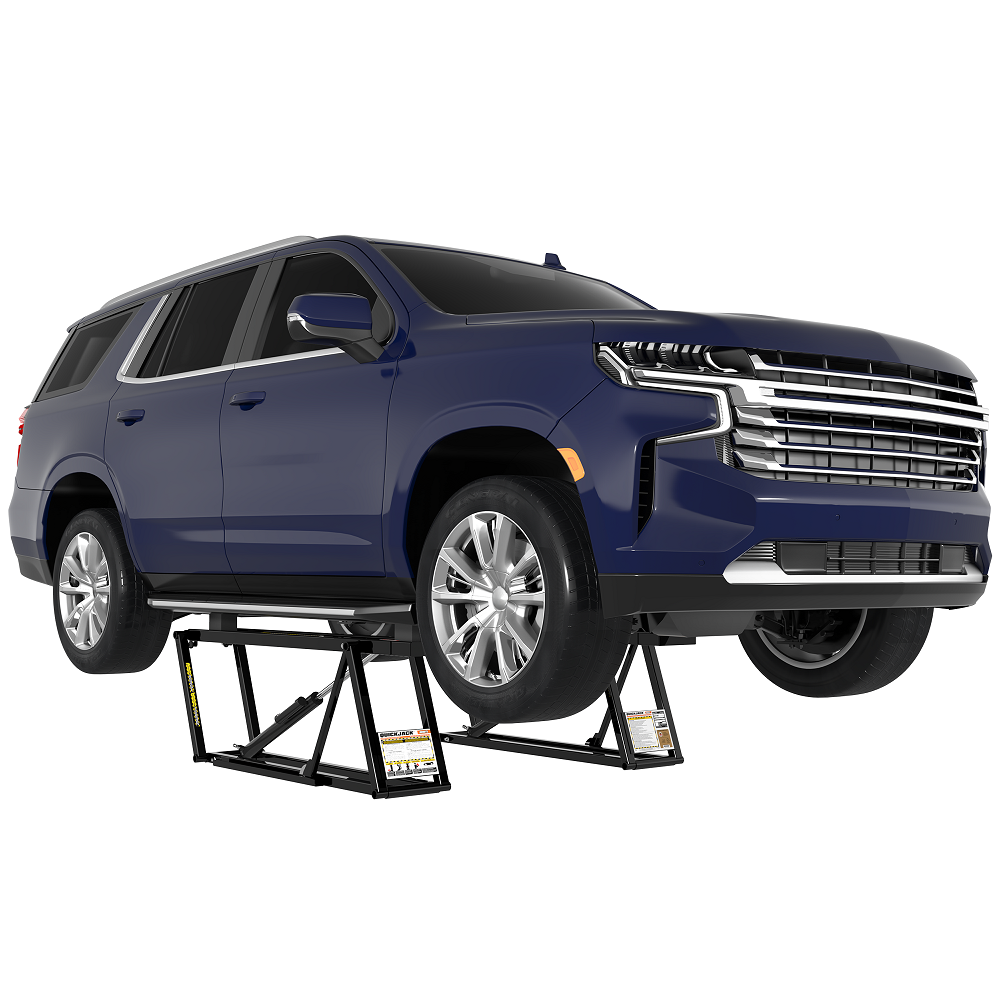
Weight Capacity Considerations
Understanding Weight Capacity Ratings
When choosing a portable car lift, understanding weight capacity is crucial. Each model will have a specific weight limit, often indicated in the product specifications. It is essential to select a lift that can accommodate the weight of your vehicle, including any additional load from tools or equipment stored inside. Exceeding weight limits can lead to equipment failure and pose safety risks. Therefore, it is critical to understand the weight of your vehicle and factor in any modifications or accessories that may increase its overall weight.
Choosing Based on Vehicle Type
Different types of vehicles have varying weight requirements. Compact cars typically weigh between 2,500 and 3,500 pounds, while larger trucks and SUVs can weigh significantly more. When selecting a portable car lift, consider the general types of vehicles you will work on in your garage. If you own a larger vehicle or plan to lift a range of cars, it is advisable to select a lift with a higher weight capacity. This choice ensures that you can safely accommodate a broader range of vehicles without worrying about exceeding weight limits.
Assessing Lift Stability
Weight capacity alone does not guarantee safety; the stability of the lift is also a crucial factor. When lifting heavy vehicles, stability becomes paramount to avoid accidents. Look for features such as wide bases or four-post designs that enhance stability during operation. Additionally, ensure that the lift comes with locking mechanisms to secure the vehicle in place once elevated. A stable and secure portable car lift will provide peace of mind when performing maintenance or repairs, allowing you to focus on the task at hand.
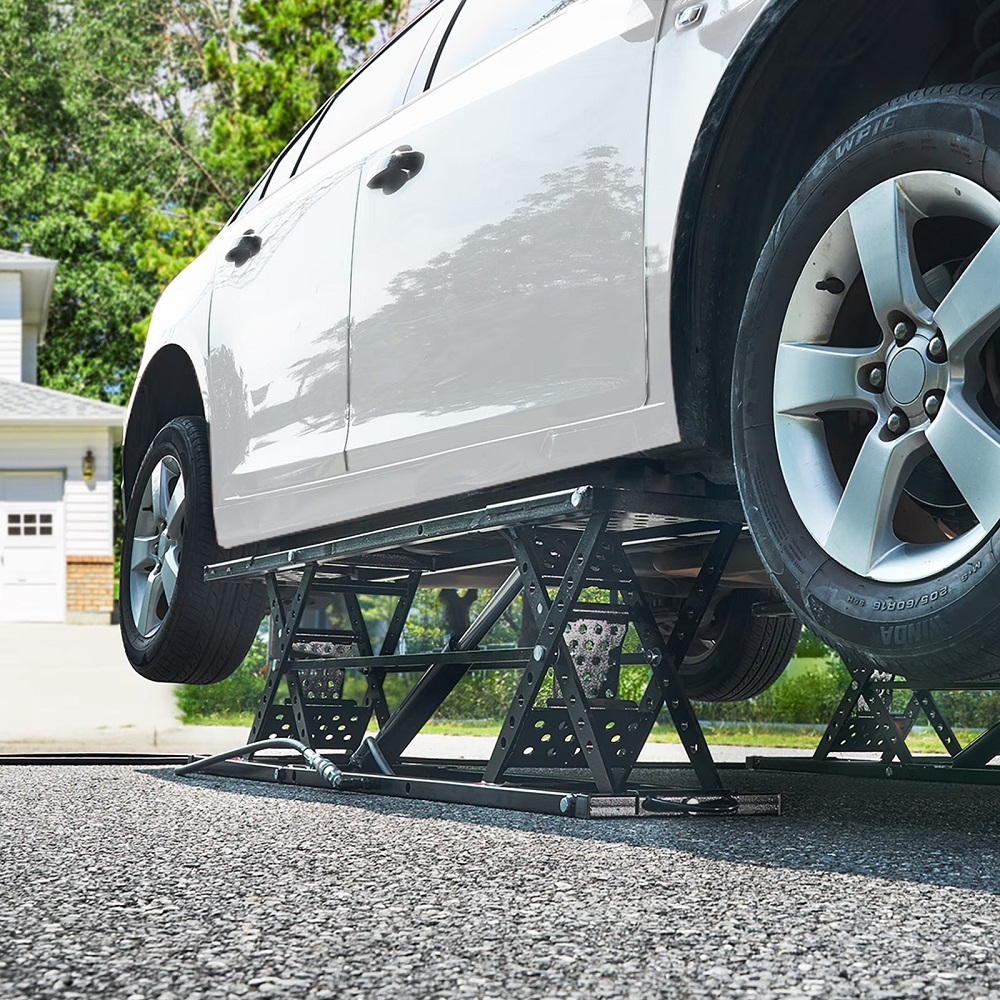
Lifting Height and Range
The Importance of Lifting Height
Lifting height is another essential consideration when selecting a portable car lift. The height that the lift can achieve determines how much space you will have to work underneath the vehicle. For tasks like oil changes or brake repairs, a lifting height of around 2 to 4 feet may be sufficient. However, for more complex jobs that require greater access, look for lifts that offer higher lifting capacities. Knowing the height requirements for the tasks you plan to perform will help you make a more informed decision about the lift you choose.
Maximum Lifting Range
Different portable car lifts offer varying maximum lifting ranges, which can affect their versatility. For example, if you plan to work on multiple vehicles with different clearance levels, opt for a lift that can accommodate a wider range of heights. This flexibility allows for versatility in your garage, as you can use the lift for different vehicles without being limited by height restrictions. A well-chosen lifting range enhances your ability to tackle various maintenance tasks efficiently.
Practical Considerations
Before committing to a listing height, consider the height of your garage ceiling. Verify that the lift will fit comfortably within your space without hitting the ceiling or other obstacles. It is vital to measure both the lift’s maximum height and your garage’s height to ensure everything aligns correctly. An appropriate lifting height contributes to a safer working environment while fostering a more enjoyable experience during maintenance and repair tasks.
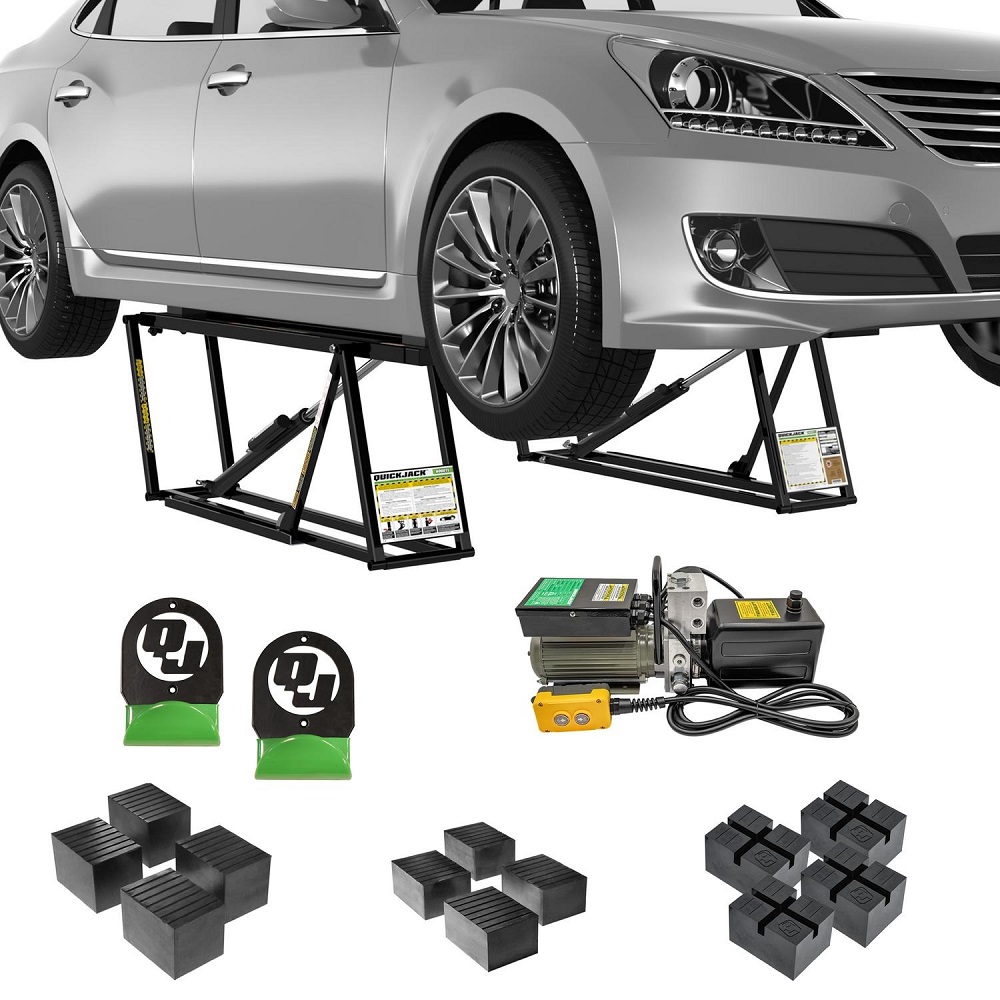
Design and Construction Quality
Material Durability
The construction quality of a portable car lift is vital for safety and longevity. Most high-quality lifts are made from durable materials, such as steel or aluminum, designed to withstand heavy loads. Steel lifts generally offer superior strength and durability, while aluminum lifts provide a lightweight option without sacrificing stability. When evaluating lifts, check for information about the materials used in the frame and components, as this will directly impact the lift’s performance and lifespan.
Stability Features
In addition to material quality, stability features are vital for ensuring safe operation. Look for designs that incorporate wide bases, reinforced structures, and locking systems. These features help maintain the lift’s stability, reducing the risk of accidents when working on elevated vehicles. A lift that exhibits superior stability is essential for safely performing maintenance tasks. This is particularly important when lifting heavy loads or working on uneven surfaces.
Ease of Transportation
Portable car lifts should be designed for easy transportation and storage. Consider lifts that offer lightweight frames and integral wheels for mobility. Some models come with collapsible features, allowing them to be compacted when not in use. A well-designed portable lift facilitates effortless movement, allowing users to transport it easily between different workspaces. The convenience of transportation enhances usability and makes the equipment more versatile as you tackle various projects.
Safety Features to Consider
Safety Locks and Mechanisms
High-quality lifts come equipped with several safety features designed to protect users during operation. Look for lifts that have safety locks to securely hold the lift in place once a vehicle is elevated. These locks prevent accidental lowering and contribute to overall stability. Always ensure that any lift you consider meets industry safety standards, providing confidence during use.
Overload Protection
In addition to safety locks, many portable car lifts come with overload protection mechanisms. This feature prevents the lift from being used with weights exceeding its specified capacity. It acts as a vital safeguard against potential accidents, ensuring that users adhere to weight limits. This protection enhances the overall safety of the component while offering peace of mind that your equipment will perform reliably without malfunction.
Regular Maintenance Checks
Ensuring your portable car lift remains safe also involves regular maintenance checks. Periodically inspect the lift for any signs of wear, such as frayed cables or loose connections. Follow the manufacturer’s recommendations for routine servicing, keeping the lift in optimal operational condition. Regular inspections will help you identify issues early on and ensure safe usage for every lift operation.
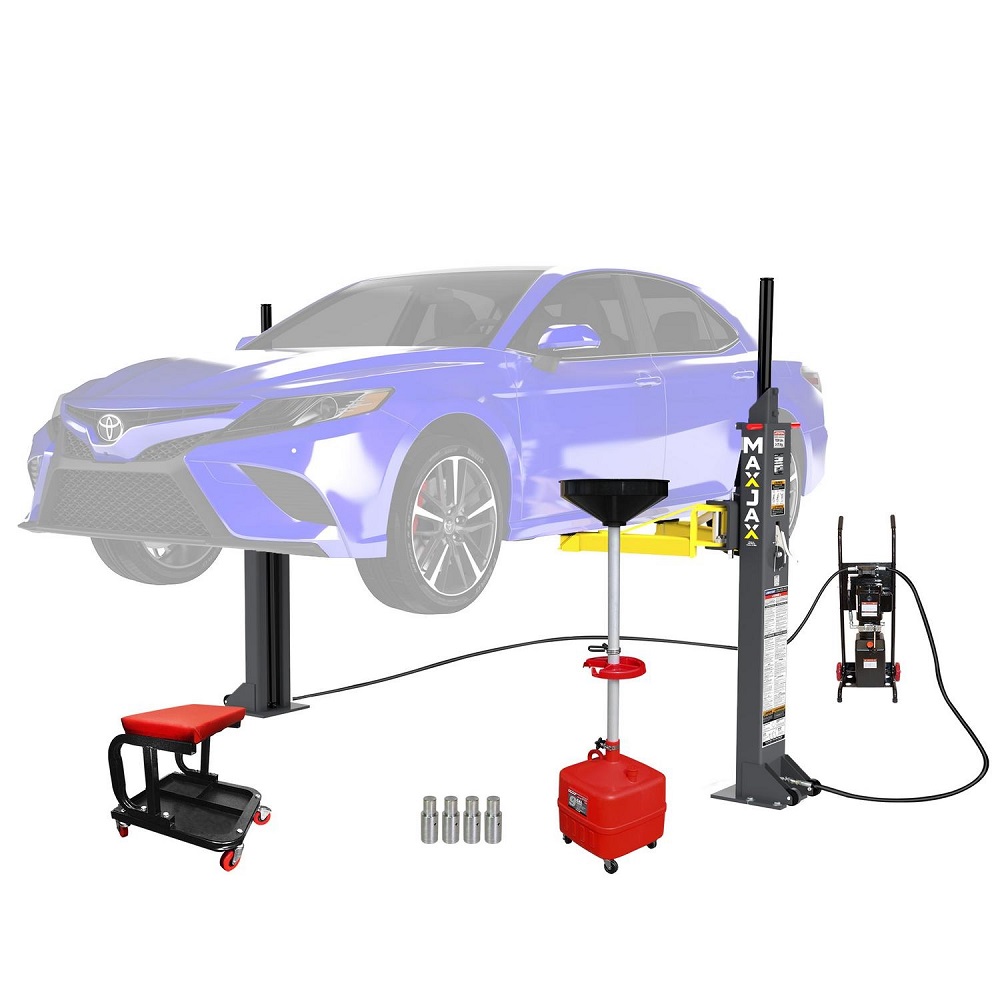
The Versatility of Car Lifts
Suitable for Various Applications
While primarily designed for automotive work, the versatility of portable car lifts goes beyond that. They can be used for motorcycle maintenance, providing easy access for tire changes and inspections. Additionally, some lifts can accommodate lawnmowers, ATVs, and even construction equipment. This adaptability makes portable car lifts valuable tools in a variety of settings. Their ability to cater to different applications highlights their practicality and enhances their appeal for various users.
Ideal for DIY Enthusiasts
For DIY enthusiasts, having a portable car lift is a game changer. No longer limited to professional garages, hobbyists can perform maintenance and repairs right at home. The convenience of a portable lift allows individuals to tackle projects they may have previously avoided. This newfound ability encourages more hands-on involvement in vehicle care, leading to greater understanding and appreciation of automotive mechanics. Investing in a quality portable car lift empowers DIY enthusiasts to work confidently on their vehicles.
Enhancing Your Workspace
A portable car lift can enhance your workspace ergonomics, reducing strain while working under vehicles. By elevating the vehicle to a comfortable height, you can minimize bending and stretching, leading to a healthier work environment. This ergonomic advantage significantly benefits those who perform frequent repairs and maintenance tasks, preventing fatigue and discomfort. As a result, individuals can work more effectively, creating a more productive workspace.
Popular Car Lift Models
Scissor Lifts
One popular type of portable car lift is the scissor lift, known for its compact design and excellent lifting capabilities. Scissor lifts have a unique structure in which the lifting platform is raised using scissor-like mechanisms. They typically provide a stable and level lifting platform, making them ideal for performing maintenance tasks. With various models available, scissor lifts can accommodate different weight capacities and lifting heights, making them suitable for a wide range of vehicles.
Two-Post Lifts
Many people frequently choose two-post lifts as a portable car lift option. These lifts allow you to raise vehicles using two vertical posts, typically mounted in a V-shape. They are excellent for access to the underside of vehicles, and they cater to a wide range of vehicle sizes. Two-post lifts offer impressive weight capacities and can handle larger vehicles with ease. When space is limited, these lifts are a practical choice for smaller garages.
Four-Post Lifts
Four-post lifts provide unmatched stability and ease of use. This type of lift consists of four vertical posts that support the vehicle evenly during operation, making them ideal for heavy-duty applications. Many 4-post lifts come with optional caster wheels, making them easier to move around when not in use. They are particularly popular among automotive enthusiasts and professionals alike, offering a wide range of features and functionalities designed for diverse applications.
Conclusion: Choosing the Right Portable Car Lift
Assessing Your Needs
In conclusion, selecting the right portable car lift begins with assessing your specific needs. Understanding the types of lifts available, features to consider, and their various applications will help guide your decision. A clear understanding of how you plan to use the lift will significantly influence your choice, ensuring you invest in equipment that meets your expectations.
Commitment to Safety and Maintenance
Prioritizing safety and proper maintenance will contribute to the longevity and reliability of your portable car lift. Regular inspections, adherence to weight limits, and proactive care will ensure optimal performance. Safety features are paramount for confident operation, allowing you to work with peace of mind.
Enjoying Your Automotive Projects
Ultimately, owning a portable car lift empowers you to take control of your automotive projects, providing the convenience and accessibility needed to work effectively. Whether you are a professional mechanic or a DIY enthusiast, a portable car lift can enhance your experience and performance. Embrace the benefits of portable technology and enjoy the freedom to explore your vehicles in a whole new way!
